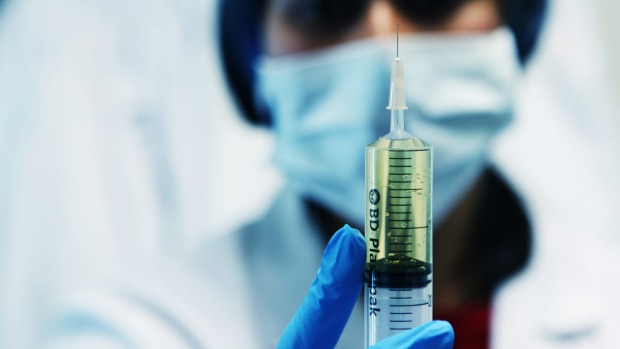
More than 30,000 people nationwide were hospitalised last year for conditions that could have been prevented if they were vaccinated, a new report has found.
The majority of admissions were for diseases including whooping cough, chickenpox and severe childhood diarrhoea.
The report, by the National Health Performance Authority, also found 12,000 people over the age of two months were hospitalised for vaccine-preventable pneumonia and influenza.
Paediatrician and immunisation expert Dr Nicholas Wood cautioned against reading too much into the figures without knowing if they included people who had not received their full course of vaccinations before being hospitalised, or if they included strains of diseases not covered by vaccines.
He also warned vaccines were not 100 per cent effective and some hospitalisations could have been due to “vaccine failures”.
The figures come as the number of people diagnosed with measles in Australia hit a 16-year high last year.
Health Department figures show 340 measles cases were recorded in Australia last year, more than half of them children.
Health experts have raised concerns about patchy vaccination rates in many trendy suburbs and of increasing conscientious objection rates.
By the end of last year 1.77 per cent of children under seven had been lodged as conscientious objectors by their parents, up from 0.23 per cent in 2000.
The Turnbull government’s controversial “no jab, no play” laws, which stop parents who refuse to vaccinate their kids from receiving child care benefits, recently made it through Parliament and will come into effect from the start of next year.
The health performance authority report found 600,000 hospitalisationscould have been prevented nationwide last year.
It found more than one in 20 patients could have avoided hospitalisation if doctors had picked up warning signs sooner.
The most common preventable hospitalisations included 70,000 for kidney and urinary tract infections, 64,000 for dental conditions, 62,000 for heart disease, 58,000 for cellulitis (skin infections) and 40,000 for diabetes complications.
Elderly Australians made up a large proportion of those who could have avoided hospital.
